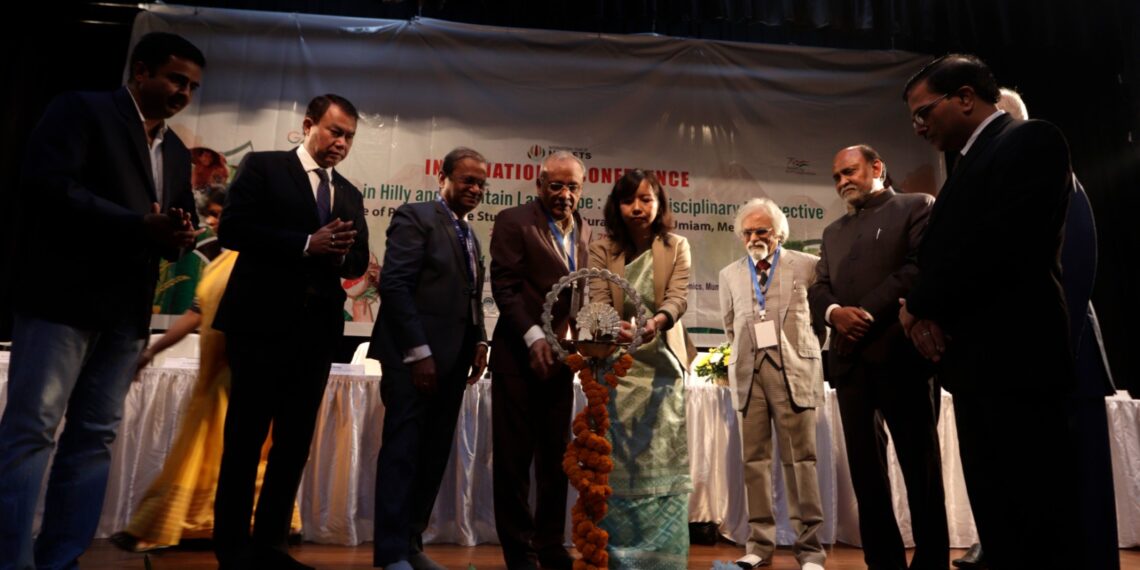Meghalaya had immense potential for transforming its agrarian economy if it could effectively use its powerful ‘5W’ assets,” claimed Dr. V.K Mishra, the director of the Indian Council of Agricultural Research for northeastern region.
His brief opening remarks at the just concluded international conference on ‘Agriculture in hilly and Mountain landscape: An Interdisciplinary Perspective’ triggered as much curiosity and amusement in the audience as they offered a lot of food for thought.
The three-day conference was jointly organized by the Indian Society of Agricultural Economics (ISAE) and at the Central Agricultural University-Manipur (CAU-M) at its Umiam campus, brought together agricultural scientists and researchers from all over India as well as Bhutan, Sri Lanka and the Philippines to deliberate on the changing agricultural trends, especially in the upland regions, which are facing the brunt of climate change.
Dr. Mishra said “Meghalaya has some inherent natural assets,” which he described as the ‘power of 5Ws’, but they have not yet been fully harnessed. First of all, he proffered, having a matrilineal society, women in Meghalaya exhibit dynamism, energy and great entrepreneurial zeal in almost every walks of lives. This untapped women power can be more effectively utilized in developing agri-based enterprises.
Secondly, the ‘power of Water’ – Meghalaya is gifted with abundance of rainfall that has earned it global fame as one of the world’s wettest places (Cherrapunji and Mawsynram). However, the state could barely harvest four per cent of water, most of which goes down to Bangladesh and ends up in the Bay of Bengal.
Thirdly, the advantage of Weather –its diverse agro-climatic conditions are most suitable for promoting health and agro-ecotourism, besides developing horticulture (fruits and vegetables), floriculture and community-based enterprises.
Fourthly, people often talk about the problem of weed due to high precipitation in Meghalaya as well as across the northeastern region, but Dr. Mishra claimed, weeds play critical role in agro-ecosystem, even though they affect yields as they compete for nutrients with crops. However, the power of weeds, its botanical components, extracts, can be mined and manipulated for managing soil as well as dealing with pest problems, he said.
Besides these, the northeastern states have also the ‘power of Wealth’ in the form of special central pool of funds (10 per cent mandatory allocation from each ministry for the region), which is also available to support innovative initiatives.
Of course, Dr. Mishra admitted, there are some serious challenges – the issues of soil and genetic erosion – which are critical to sustaining agricultural and farm-based livelihood, particularly in the hilly and mountain regions.
That’s why “our focus is also changing – earlier, we emphasized on input-output principle only, but since the late 1990s (there is) the ‘new thinking’ stresses on the environmental sustainability,” he added.
One of the key messages that emerged from the deliberation was that the challenges are complex and for that scientists have to adopt a holistic, socio-ecological perspective, opined Prof. Dinesh Marothia, the ISAE president, which is promoting the interdisciplinary approach to agricultural research.
The CAU- Manipur vice-chancellor Dr. Anupam Mishra concurred with the views of the ISAE president but insisted that there should be uniformity and consistency in approach, irrespective of different institutional mandates.















